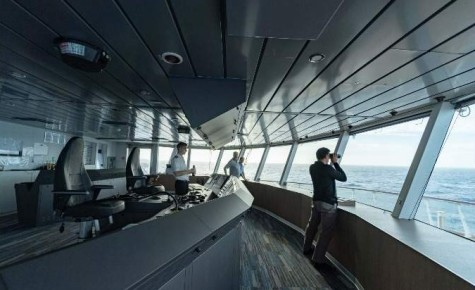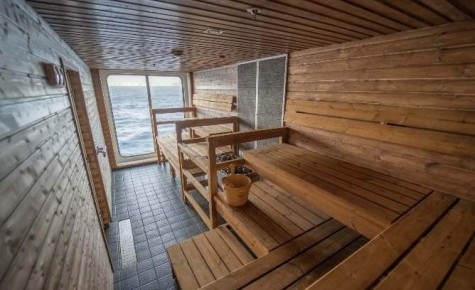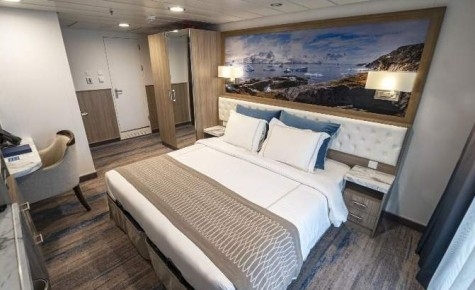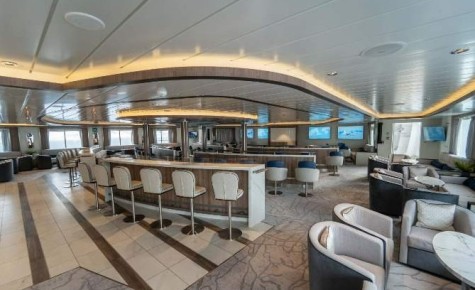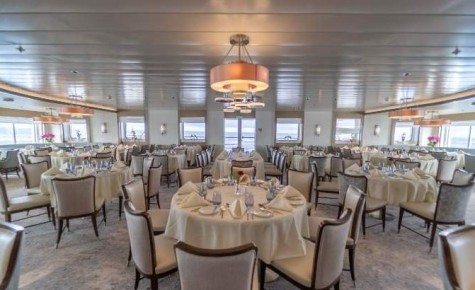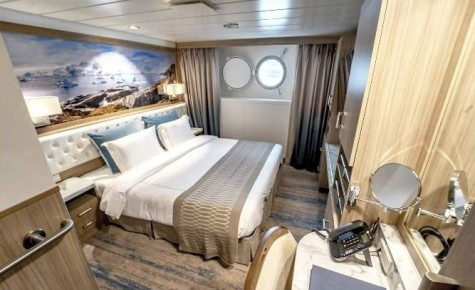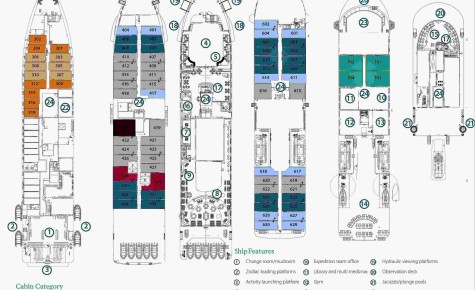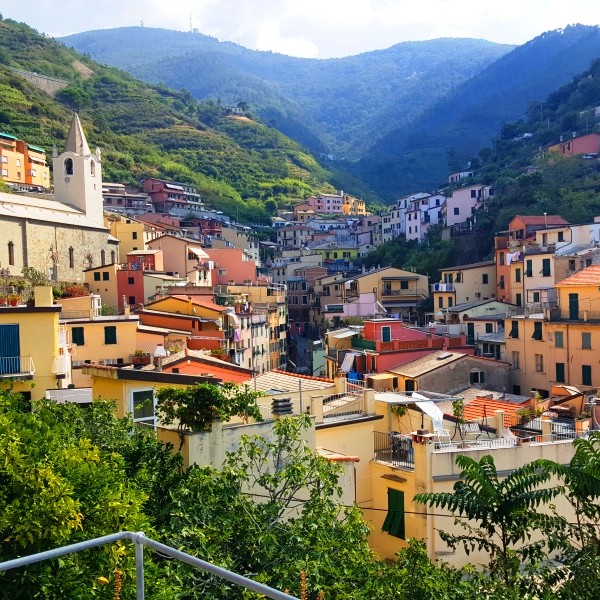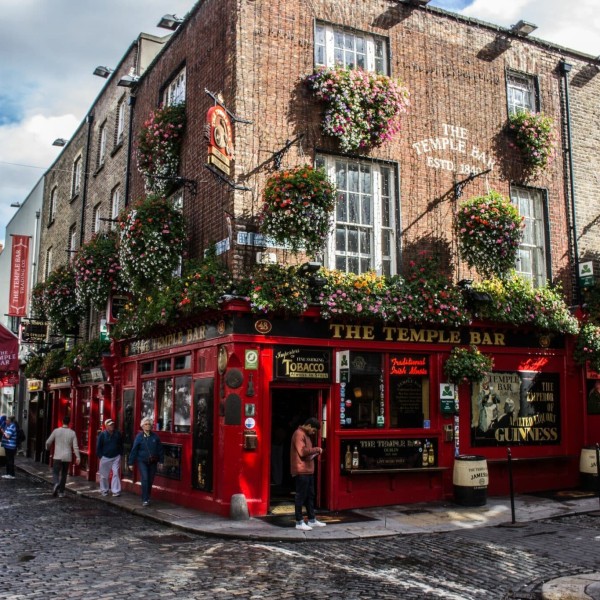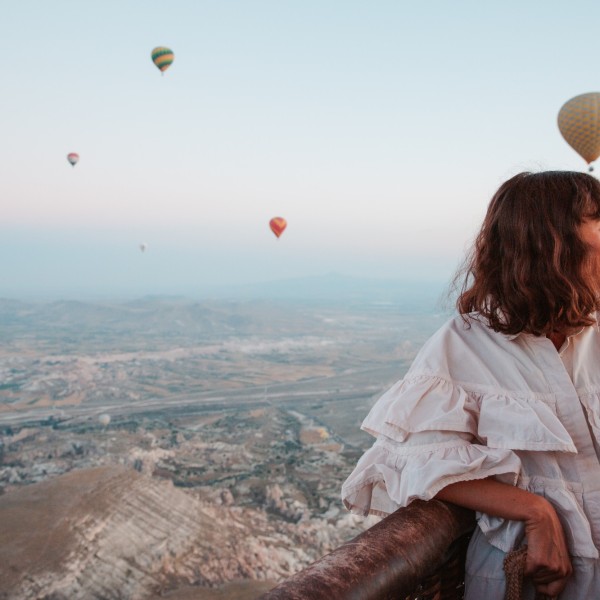Dotted throughout the north-eastern Atlantic Ocean are islands of volcanic origin that were never connected to continental landmasses. Volcanic activity has shaped the dramatic features of Cape Verde, Canary Islands and Azores, which are renowned for their exceptional biodiversity. Experience extraordinary birdlife, revel in the striking coastal and mountain scenery while on hikes, be prepared for encounters with elegant marine wildlife in their natural habitat, and hear stories of the fascinating history of the local people and their culture with its rich African and European heritage.
Highlights
• The Azores offers some of the best whale–watching experiences in Europe
• Hike among dramatic landscapes shaped by millennia of volcanic activity
• Birdwatching in Cape Verde and Canary Islands
• Enjoy no less than four UNESCO World Heritage–listed sites: Cidade Velha, Historic Centre of Ribeira Grande (Cape Verde), Historical Centre of Angra do Heroismo on Terceira Island (Azores), El Hierro Biosphere Reserve, and Garajonay National Park (Canary Islands)
• Explore Tenerife-La Gomera Hope Spot in the Canary Islands.
Itinerary
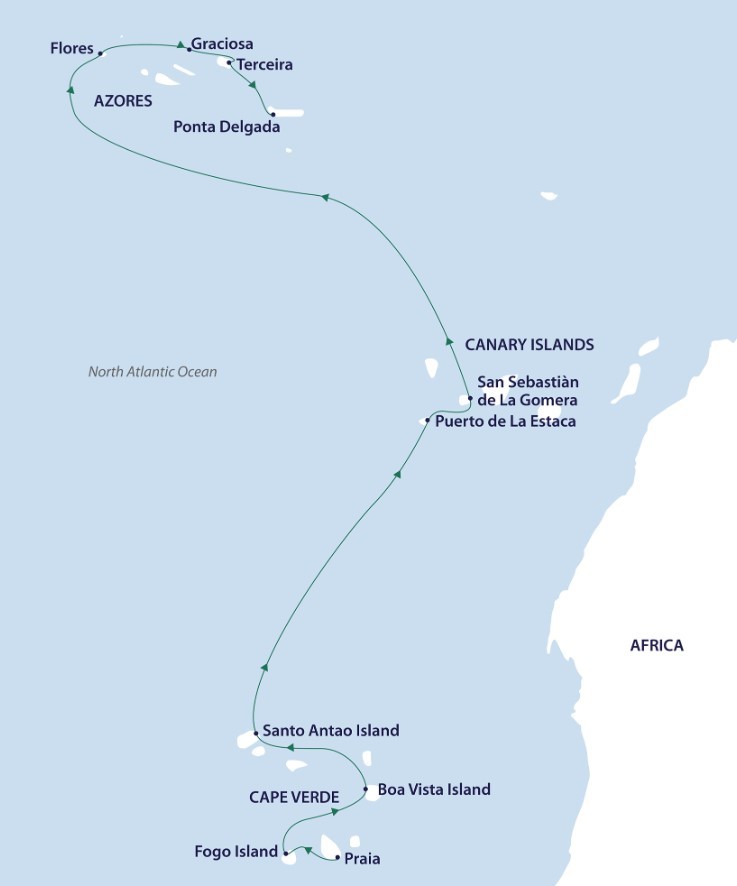
Day 1 Arrive Lisbon
Having made your way to Lisbon, you will be met by a representative of Aurora Expeditions and transferred to our group hotel. Upon arrival, kindly remind hotel check-in staff to provide you with Aurora Expeditions cabin tags for your luggage. Please clearly label the tags with your name and ship cabin number. This evening, enjoy a light refreshment as you meet your fellow expeditioners at a Welcome Reception and Pre-Embarkation Briefing. Afterwards, dine at your leisure (dinner not included). Accommodation: Marriott Hotel Lisbon
Day 2 Embarkation
Please ensure that your luggage is fitted with cabin tags clearly labelled with your name and cabin number. Any valuables or personal items should be kept on you throughout the day. Your luggage will be delivered to your cabin ahead of your arrival on board. Final, mandatory pre-embarkation health screening and COVID (rapid antigen) testing will be completed before transferring to the airport for our charter flight to Praia, Cape Verde. After arriving in Praia and if time allows, we enjoy some of Praia’s main sites, including a visit to the old town of Cidade Velha, the former capital of Cape Verde and now a UNESCO World Heritage Site. The views of the town from the fortifications of Forte Real de São Filipe are sublime. In town, we might visit Igreja de Nossa Senhora do Rosário, a church dating back to 1495, which was visited by explorers Vasco da Gama and Christopher Columbus who stopped in Praia soon after the church was built. A marble whipping post in the town square is a bleak reminder of the many people who were brought to Cape Verde from mainland Africa to be traded as slaves. Transfer to the port for embarkation and settle into your cabin before attending important safety briefings. Enjoy the thrill of departure as we ‘throw the lines’ and set sail. This evening, get to know your fellow expeditioners and our friendly Expedition Team and crew at the Captain’s Welcome Dinner, to celebrate the start of a thrilling adventure.
Day 3 Fogo Island, Cape Verde
Zodiacs shuttle us ashore at the port of São Filipe where we begin our exploration of Fogo Island, also known as the ‘black pearl’ of Cape Verde for its black volcanic sand. Wander the cobbled streets of São Filipe, a colourful Portuguese colonial town, exploring the vibrant market and local museum. Leaving the charming town, we drive along serpentine roads that take us higher and higher towards the entrance to Parque Natural do Fogo, where the Fogo volcano is located. At 2,828 metres (9,281 feet), the volcano is the highest point in the Cape Verde Islands. Fogo Island is a single, massive active stratovolcano that last erupted in 2014. Fogo is Portuguese for ‘fire.’ The dramatic landscape of Fogo has been shaped by centuries of volcanic activity, leaving a landscape of collapsed calderas, lava fields and craters.
Day 4 Boa Vista Island, Cape Verde
Boa Vista is the most easterly island in the archipelago. Marine turtles, extensive sand dunes and 55 kilometres (34 miles) of beaches, and traditional music, are the island’s main attractions. Between January and May, small pods of humpback whales visit Cape Verde to breed and give birth to live young, and Boa Vista is one of the best places to see them. Sal Rei is the capital of Boa Vista Island. It is a quiet, sleepy town with its charming palm-filled main square, Praça da Santa, brimming with flowers and pavilions. The Santa Isabel church is located in the square and features the graves of the Jewish Ben’Oliel family, who fled persecution in Morocco in the 1800s. After exploring the town square, perhaps enjoy a stroll along the Avenida dos Pescadores (Fishermen’s Avenue), which runs along the waterfront or perhaps explore the old harbour and the boatyard.
Day 5 Santo Antão, Cape Verde
In Santo Antão, we disembark at Porto Novo to begin our exploration of this mountainous island and its sensational landscapes. We drive north into the island’s steep mountainous interior cut by deep, rocky ravines and venture into verdant forests, stopping to view an old volcanic caldera, Cova de Paúl. We pass through small hamlets clinging to the sides of hills, where locals roast their own blend of coffee, filling the air with its distinct aroma. Santo Antão’s ‘ribeiras’ – deep, narrow canyons with near-vertical walls – are one of the island’s most impressive features. Our exploration of the island includes a walk among lush farming valleys where breadfruit, bananas, papaya and sugar cane grow. You may also have a chance to taste grogue, Cape Verde’s national drink made from sugar cane.
Days 6–7 At Sea
As we sail north to the Canary Islands, enjoy informative and entertaining lectures from our Expedition Team, who may presents talk on various ‘ologies’, including volcanic geology, marine biology or ornithology, and cultural geography. You may choose to spend your time editing photos of Cape Verde or simply enjoying the many wonderful facilities on the ship.
Day 8 El Hierro, Canary Islands
El Hierro is the smallest and most south westerly of the Canary Islands and is located below La Palma. The island is famous for its volcanic landscape, remarkable rock formations and diverse flora. The spectacular marine life attracts scuba divers and snorkellers from around the world. UNESCO has classified El Hierro Biosphere Reserve as part of the Man and the Biosphere Programme. Departing from the tiny harbour town of La Estaca, we begin our ascent to El Hierro’s small, quiet capital, Valverde, meaning ‘the green valley’. Valverde is the only capital in the Canary Islands that is not located on the coast. Enjoy a walk through the town where no building is more than two storeys high and where there are no traffic lights. Perhaps stop to visit the beautiful 18th-century church Nuestra Señora de La Concepción. Afterwards, we continue our climb and stop at Jinama lookout. At 1,300 metres (4,265 feet) above sea level, the view of El Golfo Valley is simply spectacular. On our descent, we drive to the small village of Frontera, passing lush valleys along the way where pineapple, banana, papaya and mango are grown. El Hierro is home to the El Hierro giant lizard. With a broad head, dark, robust body and long tail, the indigenous giant lizard can measure up to 60 centimetres (24 inches) and has long been an emblem of El Hierro, where it lives on the island’s rocky, arid terrain. The giant lizard is close to extinction and is now protected by international law. The Centre for the Recovery of the El Hierro Giant Lizard, also known as Lagartario, is a research centre that studies the giant lizard and runs breeding programs to boost numbers. We visit the centre to see these enigmatic creatures and to learn about the conservation efforts to protect them. At La Peña lookout, you have the opportunity to sample some local cheeses and wines while enjoying magnificent views of El Hierro’s north coast.
Day 9 La Gomera, Canary Islands
The island of La Gomera, shaped like a near-perfect circle, is the second smallest of the Canary Islands. San Sebastian, the capital of the island is a picturesque village and harbour. The town is best explored on foot. Enjoy an easy stroll along the main street of the Old Town, Calle Real, where the stunning church, Iglesia de la Virgen de la Asunción, is located. It was here that Columbus and his crew attended mass after loading his ships with supplies and water before setting sail for America. Today, the church is still used by crew to pray for safe passage before they depart on voyages. You will also have an opportunity to visit the church at the end of the day. Today’s adventures will focus on the scenic north side of La Gomera Island and the beautiful national park, where you will learn about the local flora and fauna. Enjoy a short and easy guided walk through one of the oldest laurel forests in the world; a prehistoric ecosystem that has survived as a result of the island’s temperate climate. The area became a national park in 1981, and a UNESCO World Heritage Site in 1986. Continue our drive to Hermigua, a beautiful, verdant valley known for its mild climate, water-filled ravines, and banana plantations. Here you can visit a handicraft centre and see displays of local pottery, utensils and looms, giving you an insight into how locals used to live. We continue our panoramic drive to the village of Agulo to visit the Juego de Bolas (Garajonay National Park Visitor Centre), which has outstanding exhibitions on the geology, climate, flora and fauna of the park. The ‘House of Memory’ has fascinating exhibits of traditional island culture including the interior of a rural house, farming equipment a cellar and traditional ceramics. Back in town, you can visit Iglesia de la Virgen de la Asunción, as well as the 15th-century fortress Torre del Conde, and the La Gomera Archaeological Museum.
Days 10–11 At Sea
Our onboard lecture series continues with fascinating talks on the people, history and culture of the islands visited on our voyage as well as presentations on wildlife and geology. You may choose to spend your time keeping fit in the gym, or treating yourself to a massage in the wellness centre.
Day 12 Flores, Azores
Located in the middle of the Atlantic Ocean, the archipelago of the Azores is where three continental plates meet. It is an area that attracts large numbers of whales and adventurous sailors. Dr Sylvia Earle’s Mission Blue recognises the Azores archipelago as a Hope Spot and says, ‘The Azores archipelago is a magnet for life. It really is a magical place. Launching the Azores as Hope Spot is so logical – just ask the whales. They know how special this place is. This used to be a place where whales were killed, and now people are making a living by respecting the whales and having people come out and visit them as fellow citizens of the planet.’ Not only is the Azores archipelago a Mission Blue Hope Spot, many of its islands are recognised by UNESCO as places of universal value. In 2009, Flores was classified as a UNESCO Biosphere Reserve. The island offers a number of sublime walking trails where you can choose to follow the coastline or venture inland to see shimmering lakes of flooded volcanic calderas. There are countless waterfalls and birders can expect to see migratory species including waders, passerines, shearwaters and terns. Flores also features some splendid Portuguese architecture including the 19th-century church Nossa Senhora da Conceição, and the Flores Museum.
Day 13 Graciosa, Azores
The small and lush island of Graciosa awaits with adventures of a visit to Furna do Enxofre, where we descend by spiral staircase into a 100-metre (328-foot) deep cavern beneath the plug of a former volcano. This well-known volcanic feature still exudes fumes and has bubbling mud pools. In 2007, Graciosa was classified as a UNESCO Biosphere Reserve. The Azores are internationally recognised as a spectacular destination for birdwatching. The archipelago boasts approximately 30 breeding species, with the number of occasionally seen species already approaching 400, and Graciosa is home to a number of endemic species, including Monteiro’s storm petrel. Graciosa offers wonderful walking trails including coastal hikes and a walk along the perimeter of the volcanic cone. Other popular activities offered on the island are excursions for whale watching and swimming with dolphins.
Day 14 Terceira, Azores
Terceira Island is renowned for its rich historical heritage. The city of Angra do Heroismo is classified as a World Heritage Site by UNESCO. A walking tour of Angro do Heroismo includes a visit to the small but stunning botanical gardens, the town’s main cathedral and the delightful town square. You may choose to visit Algar do Carvão, a volcanic cave showcasing magnificent stalactites and stalagmites of amorphous silica, where the upper walls are covered in ferns, mosses and liverworts. The island offers superb birdwatching and is home to a colony of common terns and roseate terns nesting in a special protected area. It is also possible to spot waders from North America here. Excursions for whale watching and swimming with dolphins are also available on Terceira Island.
Day 15 Disembarkation
Disembark in Ponta Delgada, where a charter flight awaits to transport us back to Lisbon. Flight times are yet to be confirmed and if time allows, we will explore some of São Miguel Island’s attractions. São Miguel features a number of delightful gardens to explore including the António Borges Garden, named after the greatest Azorean landscape architect, and the José do Canto Botanical Garden, which has collections of rare plants. Terra Nostra Park features a thermal swimming pool and more than 2,000 trees, and Ponta da Ferraria is a spa and bathing site with therapeutic springs that have been used since the 15th century. All are fantastic options to enjoy before transferring to the airport for our charter flight to Lisbon.
Important note:
Aurora Expeditions operates in remote and challenging environments, and in the spirit of expedition travel, we encourage you to be flexible and to adopt an adventurous attitude when joining our voyages. This itinerary is a guide only and is subject to change due to weather, sea state and other conditions beyond our control. Please note that on this voyage, Aurora Expeditions is required to partner with local tour operators for the included shore excursions and optional activities mentioned in the itinerary.
Ship Information
Greg Mortimer
Vessel Type: Expedition
Length: 104 metres
Passenger Capacity: 132
Built: 2019
Capable of negotiating the strongest winds and waves, the Greg Mortimer is built to world-class polar standards – designed in close consultation with our expedition specialists, taking advantage of our more than 25 years of experience.
The Greg Mortimer redefines expedition cruising for the future, with just 132 passengers on board in the polar regions. Not only is the ship bigger to contend with adverse weather conditions, its added creature comforts make for a more enjoyable journey out on the open ocean. The Greg Mortimer remains true to our ethos and focus on multiple landings, flexible itineraries and family atmosphere – just with an improved home base!
As a modern and custom-designed ship, the Greg Mortimer is at the cutting edge of nautical technology. Robust, powerful and built with our guests in mind, this ship marks a significant investment in our fleet’s capabilities. From the European Arctic to the depths of Antarctica, and other far-flung destinations in-between, the Greg Mortimer will make your journey a breeze!
Greg Mortimer ULSTEIN X-BOW™
Our expeditions face some of the worst Mother Nature can throw at us. However, this won’t be problem on the Greg Mortimer with the introduction of the patented X-BOW™, created by Norwegian ship designer ULSTEIN. As one of the leaders in marine engineering, ULSTEIN’s X-BOW™ is an inverted bow concept that’s been built on over 100 vessels in the shipping industry. Excitingly, we are the first expedition cruise operator to utilise this technology for the challenging open ocean waves!
Hydraulic viewing platforms
Although there is no doubt that you’ll love the aesthetics of the Greg Mortimer, we are all here to admire the spectacular landscape and spot the elusive wildlife in their natural habitat. To ensure you get the best views possible, the new ship features unique viewing platforms, custom-built for the Greg Mortimer. Accessed from Deck 5, the two platforms fold out hydraulically for unobstructed views of passing marine life and seabirds – make sure your camera is locked and loaded!
Zodiac launching platform
Zodiacs are a vital part of getting up close and personal on your adventure – sneaking into areas that the Greg Mortimer can’t reach. On this new ship, there are specially designed launching platforms that enables us to load Zodiacs easily and quickly, allowing you to spend more time exploring on the two to three daily landings. There are 15 Zodiacs that are boarded from either side of Deck 3 (sea level), perfect for when there is a group of fluffy cute penguin chicks that we need a photo of!
Activity Platform
Regardless of your destination, we offer a number of additional activities to allow you to see more of the environment. From kayaking and diving to climbing and ski touring, it’s these optional activities that often leave the biggest impression on your trip as a whole. Onboard the Greg Mortimer, there is a spacious prep and loading platform for these activities and more – designed in consultation with our expert activity guides.
Environmentally friendly
Climate change and carbon emissions continue to be major issues that everyone needs to be aware of and actively managing. This includes reduced emissions into the air and sea, lower energy consumption, high fuel efficiency, reduced light pollution for minimal wildlife disruption and lower on-board plastic use. It’s vital to also mention the state-of-the-art virtual anchoring technology of the X-BOW™, which means the ship can float anchorless while launching Zodiacs, kayaks etc, without disturbing delicate sea floor areas.
Safety features
This starts with the return-to-port equipment – not compulsory on a ship of this size – which duplicates the propulsion system. This enables the ship to maintain operating systems and comfort in the event of engine failure. Furthermore, the Greg Mortimer is Polar Code 6 compliant, holds BV class and is fully compliant with the latest SOLAS requirements. It’s also built with a Rolls Royce stabiliser system. If there’s an incident or accident during your adventure, the ship has an on-board, fully-stocked medical centre – where our trained medical team can provide necessary treatment in a timely fashion. Safety continues to be an issue that our team takes very serious and the Greg Mortimer allows us to create an environment where you can concentrate on the brilliant landscape and wildlife, without worrying about your wellbeing.
Ship Life
Greg Mortimer is designed to serve your every need. It’s your bedroom, bathroom, lounge, dining room and even your observatory. Make yourself at home, the Greg Mortimer is yours to enjoy!
Observation Points
Let’s face it – you don’t want windowless rooms when travelling around some of the most beautiful locations around the world. This is why the Greg Mortimer is designed with plenty of dedicated observation spaces – ideal for keen bird spotters, wildlife watchers and those wanting to watch the scenery go past. From the indoor 180-degree lounge and outdoor 360-degree open deck, both on deck 8, to the 270-degree open sundeck on level 7, there are plenty of observation points to share around the ship! If these are full, then you can take up a spot on one of the two hydraulic viewing platforms on deck 5. Aurora Expeditions also has an open bridge policy, which means at any point you can come up to the bridge and check out what the captain and officers are up to. From watching navigational practices to observing mapping techniques, you can get a firsthand look at the inner workings of the Greg Mortimer.
Shore excursions
Although the ship is fun, the real enjoyment comes from the many shore excursions that are available. Depending on the weather and itinerary, it’s possible to take two to three landings daily, taking a look at everything from rock formations and ancient ruins to cute groups of penguins. We know time is of the essence in these wild locations, so the Greg Mortimer has been designed with 15 Zodiacs, which means you can maximise your time on shore. From four dedicated sea level launching platforms, transfers are quicker, safer and enable you to get closer to the action for a longer period of time. Just remember to charge your camera before you step onto the Zodiac!
Activity options
From kayaking and skiing to diving and climbing, these are one-in-a-lifetime opportunities that you need to take advantage of. Aboard the Greg Mortimer there is a specially designed launching platform for all activities, a concept overseen by our activity experts. This area also includes individual lockers in the expansive mudroom and rapid drying areas for wetsuits so you can quickly get warm after exploring in the elements!
Dining
From the moment you step onto the Greg Mortimer, we aim to give you the best hospitality service possible. Starting with the official Captain’s welcome, as our guests, you’re welcome to 24 hours complimentary coffee, tea and snack facilities in addition to the range of different menu options and courses for each meal. Meals are served in large dining room/restaurant with family style dining, perfect to swap stories with your new expedition family. Enjoy the range of house wine, beers and soft drinks included with dinner after a long day in the wild, preparing yourself for another exciting day to follow. On the last day of your trip, the team on the Greg Mortimer put on a special farewell four-course dinner and cocktails – a perfect way to reflect on your time on the ship and consolidate lifelong friendships with the people you’ve met on-board.
On-board entertainment
When you’re relaxing during a sea day or you have a little downtime on the ship between excursions, what is there to do onboard the Greg Mortimer? Plenty! On all our expeditions, there are experts who lead presentations in the spacious lecture room so you can understand the region a little better. These often include topics as broad as history and culture to biology and climate change, these presentations aim to educate and entertain. If you’re keen to just watch the surroundings and keep your eyes peeled for wildlife, you have access to two bars/lounges where the stunning floor to ceiling windows offer a special perspective on the landscape. The Greg Mortimer is also decked out with other facilities for your enjoyment. There is a library on Deck 5 with books and maps and a Wellness Centre complete with gym equipment, sauna and spa. Feeling a little sore after walking around all day? Treat yourself to a massage at the Wellness Centre and feels the aches disappear! Keen photographers and artists will revel in the multimedia room on Deck 5.
What’s Included
Inclusions
• Accommodation in your chosen stateroom or suite
• All Zodiac excursions
• Shore excursions specified as included in the itinerary
• Entrance fees where applicable
• Experienced expedition team
• On board lectures held by expedition team
• All meals while on board
• House wines, beer and soft drinks included with dinner
• Captain’s Welcome and Farewell drinks including four-course dinner, house cocktail, house beer and wine, non-alcoholic beverages
• Rubber boots for use during the voyage
• Complimentary access to our onboard doctor for consultations relating to sea-sickness
• Comprehensive pre-departure material
• Personalised voyage photo book (post-voyage)
• Port fees/taxes
• Suite Benefits – Additional benefits for those who book Balcony, Junior and Captain’s Suites:
• One free pair of binoculars per suite
• 1-hour spa treatment (Massage or facial only)
• Free stocked mini bar (Balcony and Junior suites stocked once, not replenished. Captains suite replenished as needed)
• Gratuities/tips for crew included – to the value of USD$15 per person per day~
• 1 free bottle of champagne per suite
• Transfer from airport to hotel on arrival Day 1.
• Welcome reception/pre-embarkation briefing on Day 1.
• One night’s hotel accommodation including breakfast, in Lisbon on Day 2.
• Mandatory pre-embarkation health screening and COVID test on Day 2.
• Transfer from hotel to airport on Day 2.
• Charter flight from Lisbon to Praia on Day 2.
• Departure transfer to airport on Day 15.
• Charter flight from Ponta Delgada to Lisbon on Day 15.
Exclusions
• International or domestic airfares unless specified in the itinerary
• Pre and post voyage accommodation
• Transfers
• Beverages other than those listed in inclusions
• Gratuities
• Any items of a personal nature including medical costs incurred on board
• Passport and visa costs if applicable
• Travel insurance including mandatory medical evacuation cover
• GRATUITIES. A US$15.00 per person per day gratuity for the crew is automatically added to your onboard account. It is at your discretion if you would like to remove the tip (or increase/decrease the amount) when you settle your account. It is not necessary to tip the expedition team members.
Images courtesy of Wild Earth Travel






